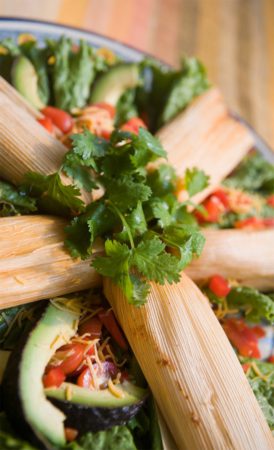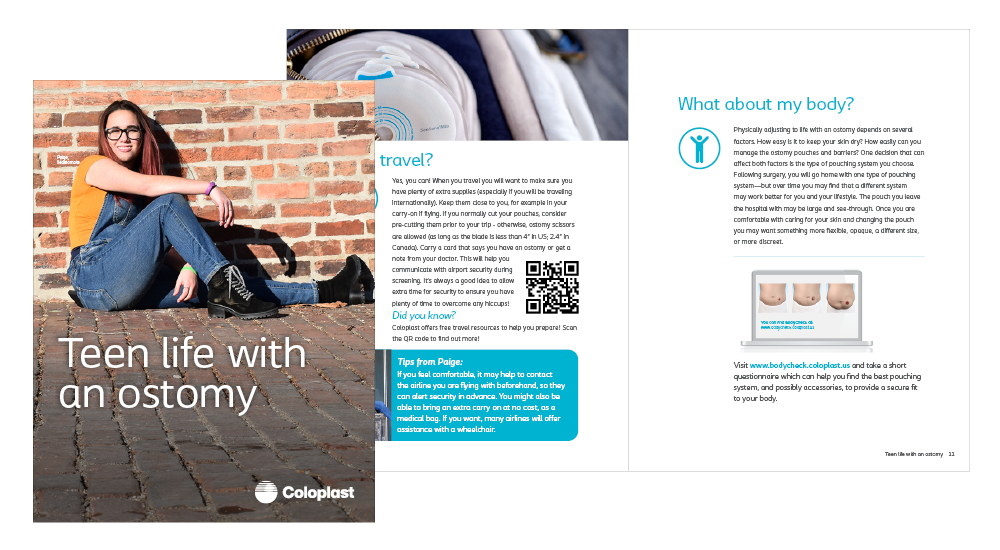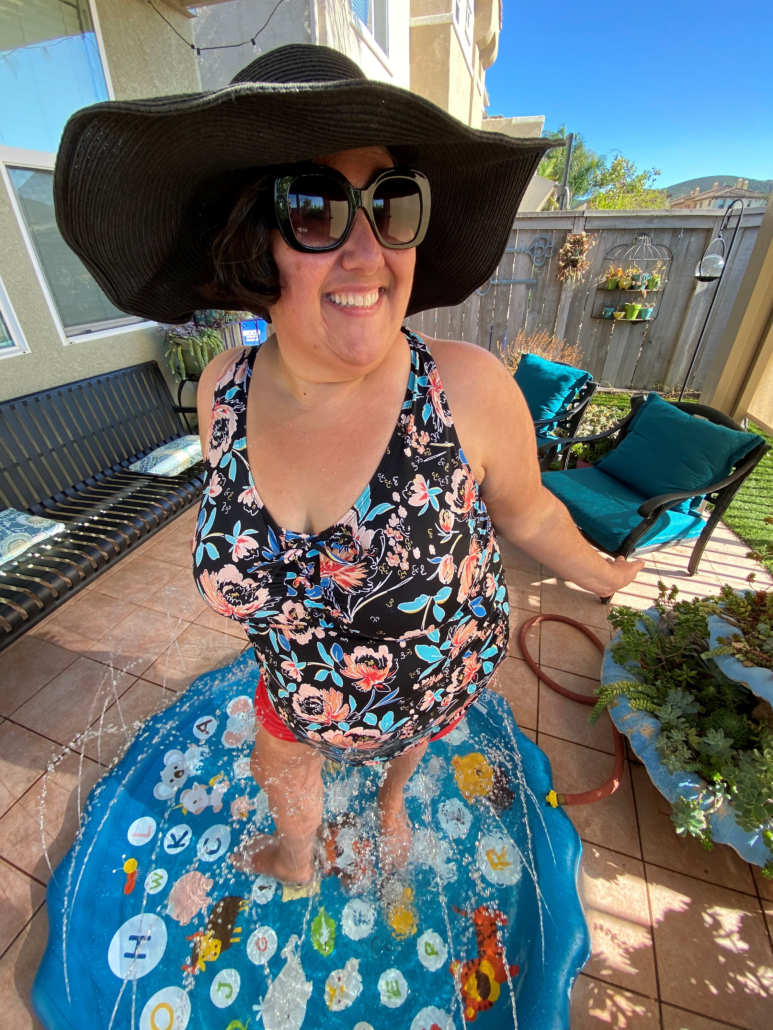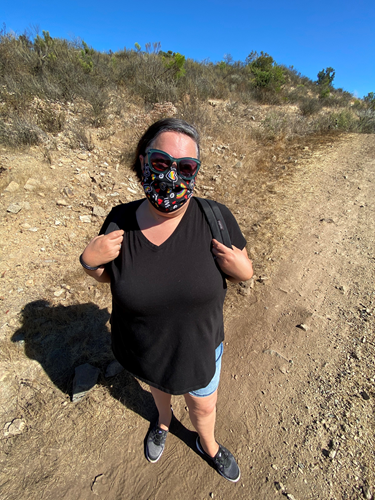What is more important: fit, flexibility, stretch capability, or adhesion?
If you cannot decide, or there are two or more that are just as important, you are not wrong. Why not have all in one for your barrier selection? You can have fit, flexibility, stretch capability, and adhesion in one pouching system!
Fit
When selecting a barrier, many considerations can come into play. When considering fit, proper application and sizing is important to help reduce leakage and create a seal around the stoma. Utilizing a stoma measuring guide or template with each pouch change is beneficial to help obtain the proper fit. Stoma size can change after surgery, so measuring is key. Deciding between a precut or a cut-to-fit barrier is also important to consider, as it depends on which option provides the best fit to your body.
Flexibility
A flexible barrier will move, bend, and stretch with your body allowing you to be comfortable as you go about your daily activities. Flexibility with stability helps achieve a seal around the stoma along with the proper fit. In day-to-day movements like, getting in and out of your car, vacuuming, getting a spice off the top shelf, or even a sport you enjoy playing, flexibility is important to move with your body.
Stretch capability
Can you have flexibility without stretch capability and vice versa? What if these two worked hand in hand to create the best seal and optimal comfort to help you with your daily activities? Think back to reaching to get a spice off the top shelf in the kitchen. You need to have flexibility in the barrier to obtain the stretch, but then when back in a normal standing position the ability for the barrier to go back to the original shape after completing the stretch—how is that obtained? Teamwork!
Adhesion
Lastly the ability for the barrier to have adhesion to the skin. This can be a challenge outside of the barrier itself. For example, what if there is a small area of irritation, moisture, or the landscape is not perfectly flat (which is very common)? The adhesion is important to provide the tact to the skin so that the barrier has all the capabilities: fit, flexibility and stretch! Good adhesive security is obtained by gentle warmth using the body heat of your hands, and a nice gentle pressure with application from the inside (near the stoma) all the way to the edges of the barrier. This helps activate the adhesive into those small nooks and crannies that our skin has even if we can’t see them with the naked eye.
Essentially, there are many questions that may come up when deciding on the best barrier fit for you. Let’s go back to the original question that was posed: What is more important: fit, flexibility, stretch capability, or adhesion? The answer can be any of the above, and it all depends on your own lifestyle and personal needs. Things to keep in mind when you are considering your barrier options are, “Does this barrier have a good fit to my body?”, “Does the barrier allow me to stretch without compromising the seal?”, and lastly, “Does this barrier give me the security to enjoy my activities?”. There are options available for many body types and challenges. Reach out to your WOC nurse so they can help you answer the questions that are important to you!
Mackenzie Bauhs, CWOCN, is currently an employee and Ostomy Clinical Consultant for Coloplast. She obtained her bachelor’s degree at Carroll University in Wisconsin. She has worked with ostomy patients in the post-operative period at the University of Wisconsin Hospital and Clinics in Madison, Wisconsin as well as outpatient ostomy care at Rush University Medical Center in Chicago, Illinois.
The materials and resources presented are intended to be an educational resource and presented for general information purposes only. They are not intended to constitute medical or business advice or in any way replace the independent medical judgment of a trained and licensed physician with respect to any patient needs or circumstances. The information presented or discussed may not be representative of all patient outcomes. Each person’s situation is unique, and risks, outcomes, experiences, and results may vary. Please see complete product instructions for use, including all product indications, contraindications, precautions, warnings, and adverse events.
Editor’s note: This article is from one of our digital sponsors, Coloplast. Sponsor support along with donations from readers like you help to maintain our website and the free trusted resources of UOAA, a 501(c)(3) nonprofit organization.

 not in the holiday spirit. That doesn’t mean you need to deprive yourself, though. Just choose wisely.
not in the holiday spirit. That doesn’t mean you need to deprive yourself, though. Just choose wisely.



 enjoying a highly active lifestyle. So when I found out that I needed a stoma revision, I knew that my recovery would look very different from my previous surgeries. I knew that in order to improve my recovery time, decrease my risk for complications, and get back to the mountains, I had to put in more work.
enjoying a highly active lifestyle. So when I found out that I needed a stoma revision, I knew that my recovery would look very different from my previous surgeries. I knew that in order to improve my recovery time, decrease my risk for complications, and get back to the mountains, I had to put in more work. As you start your journey to recovery, you’ll experience that life after ostomy surgery is a new reality. No matter how far after surgery you are, you will need to adapt to your condition and cope with your new situation. If you’re looking for additional support during your ostomy journey, consider enrolling in Coloplast’s free online support program, Coloplast® Care! It is a personal product support program designed in collaboration with nurses to provide you with individualized product support and lifestyle education, and product access coordination. Coloplast Care is available when you need it – whether it is through our online educational resources offering reliable product and lifestyle advice, news and tips customized for your situation, or over the phone with our team of dedicated Ostomy Advisors. We’re here to help!
As you start your journey to recovery, you’ll experience that life after ostomy surgery is a new reality. No matter how far after surgery you are, you will need to adapt to your condition and cope with your new situation. If you’re looking for additional support during your ostomy journey, consider enrolling in Coloplast’s free online support program, Coloplast® Care! It is a personal product support program designed in collaboration with nurses to provide you with individualized product support and lifestyle education, and product access coordination. Coloplast Care is available when you need it – whether it is through our online educational resources offering reliable product and lifestyle advice, news and tips customized for your situation, or over the phone with our team of dedicated Ostomy Advisors. We’re here to help! So, what can I do now that I have a urostomy?
So, what can I do now that I have a urostomy? There are so many other things I have been able to do since my
There are so many other things I have been able to do since my 

 nurses) would recommend 3‐5 days of wear time. What I would definitely advise against is waiting until you HAVE to change due to a leak. Before you realize you have a problem, waste is coming into contact with your peristomal skin, and that may lead to skin damage. Above all, you want to keep your skin healthy, happy and intact. So when would my daily activity impact my wear time? Again it’s moisture math! I mentioned earlier that I like to swim and jacuzzi; a quick dip for an hour or so is very different than a big day out that involves being in a wet bathing suit all day. If I am planning a big day out on the water, in the pool, at a beach or waterpark, I figure that in to my changing schedule. For example if day one was Thursday, and day three is a big day out involving water, when I get home, I’ll typically shower and do a full change.
nurses) would recommend 3‐5 days of wear time. What I would definitely advise against is waiting until you HAVE to change due to a leak. Before you realize you have a problem, waste is coming into contact with your peristomal skin, and that may lead to skin damage. Above all, you want to keep your skin healthy, happy and intact. So when would my daily activity impact my wear time? Again it’s moisture math! I mentioned earlier that I like to swim and jacuzzi; a quick dip for an hour or so is very different than a big day out that involves being in a wet bathing suit all day. If I am planning a big day out on the water, in the pool, at a beach or waterpark, I figure that in to my changing schedule. For example if day one was Thursday, and day three is a big day out involving water, when I get home, I’ll typically shower and do a full change.
